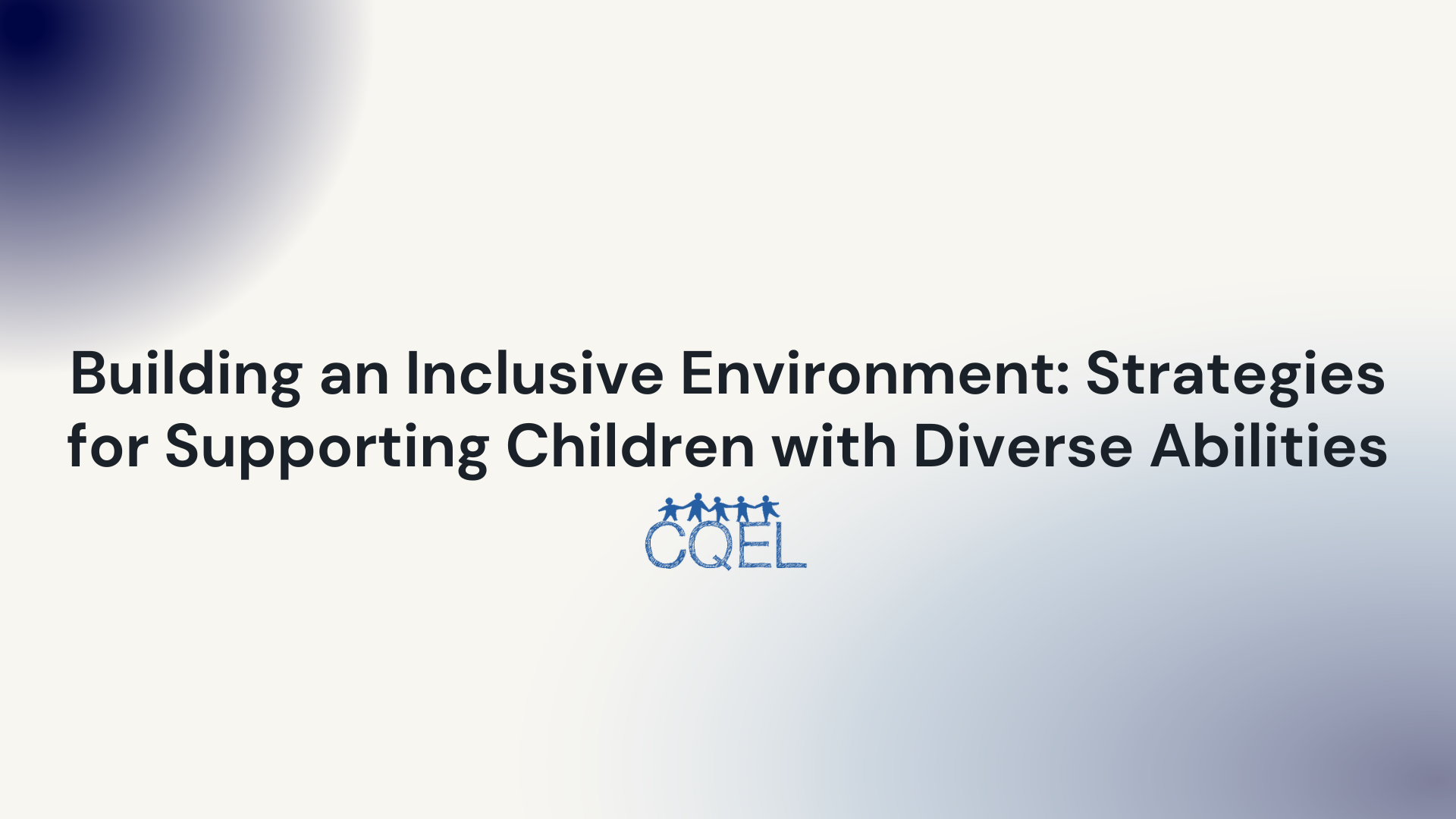Building an Inclusive Environment: Strategies for Supporting Children with Diverse Abilities
Understand the need for individualized accommodations, building partnerships with families and specialists, fostering an inclusive culture, providing sensory experiences, and employing universal design principles for a welcoming, supportive educational environment.

As early childhood care educators, it is our responsibility to ensure that all children feel welcome, included, and supported in our centers. For children with special needs, creating an inclusive environment can make all the difference in their early childhood education. In this article, we will explore how to accommodate children with special needs and create an inclusive environment in your center.
- Provide Individualized Accommodations
Every child has unique needs, and it is essential to provide individualized accommodations to support children with special needs. Consider partnering with families and specialists to determine the best accommodations for each child. Some common accommodations include:
- Modifying the physical environment: For children with mobility impairments, modifying the physical environment by adding ramps, wider doorways, and accessible bathrooms can make a significant difference.
- Adapting materials and equipment: Adapting materials and equipment, such as providing a larger keyboard or a sensory-friendly chair, can help children with sensory or motor impairments participate in activities.
- Providing additional support: For children with learning or behavioral challenges, providing additional support, such as a one-on-one aide or social skills training, can help them succeed in the classroom.
2. Build Partnerships with Families and Specialists
Building partnerships with families and specialists is crucial for accommodating children with special needs. Families are the experts on their children and can provide valuable insights into their needs and abilities. Specialists, such as occupational therapists, speech therapists, and behavior analysts, can provide guidance and support in developing individualized accommodations.
Consider holding regular meetings with families and specialists to discuss each child's progress, needs, and accommodations. This can help ensure that everyone is on the same page and that each child receives the support they need to succeed.
3. Promote an Inclusive Culture
Promoting an inclusive culture in your center is essential for creating an inviting environment for children with special needs. This includes:
- Encouraging diversity: Celebrate and value diversity in your center by incorporating multicultural activities and materials, and highlighting the unique strengths and abilities of each child.
- Educating staff and families: Providing education and training to staff and families on disability awareness, inclusion, and best practices for accommodating children with special needs can help create a culture of inclusivity.
- Fostering friendships: Encourage friendships between children of all abilities by promoting inclusive play and social activities. This can help break down barriers and promote understanding and acceptance.
By promoting an inclusive culture, you can create a welcoming and supportive environment for children of all abilities.
4. Provide Sensory Experiences
Sensory experiences are essential for children with sensory processing challenges, such as those with autism spectrum disorder. Providing sensory experiences can help these children regulate their sensory input, reduce anxiety, and increase engagement in learning activities.
Consider providing sensory activities, such as a sensory table, sensory bins, or a sensory room, for children to explore and engage with. These activities can provide a safe and calming space for children to regulate their sensory input and engage in play.
5. Use Universal Design Principles
Universal design principles are design principles that create spaces, materials, and equipment that are accessible and usable by all people, including those with disabilities. By incorporating universal design principles into your center, you can create an inclusive environment that accommodates the needs of all children.
Some universal design principles to consider include:
- Providing clear signage and way-finding: Clear signage and wayfinding can help children with visual impairments navigate the physical environment independently.
- Using color contrast: Using color contrast can help children with visual impairments differentiate between objects and materials.
- Providing multiple modes of communication: Providing multiple modes of communication, such as pictures, symbols, and sign language, can help children with communication impairments participate in activities.
Incorporating universal design principles into your center can help create an inclusive environment that accommodates the needs of all children, regardless of their abilities. Universal design principles involve creating spaces, products, and experiences that are accessible and usable by people of all ages, abilities, and backgrounds. By incorporating these principles into your center's physical environment, curriculum, and activities, you can ensure that children with special needs are able to fully participate in all aspects of your program. This will not only benefit the children with special needs but also enhance the experience for all children in your care, creating a truly inclusive and welcoming environment for everyone.
In summary, creating an inclusive environment for children with special needs is crucial for their development and well-being. As early childhood care educators, it is our responsibility to ensure that all children feel welcome, included, and supported in our centers. By providing individualized accommodations, building partnerships with families and specialists, promoting an inclusive culture, providing sensory experiences, and using universal design principles, we can create an inclusive environment that accommodates the needs of all children. Remember, every child is unique and deserves the opportunity to learn and grow in a supportive and inclusive environment. By embracing inclusivity, we can create a brighter future for all children.
